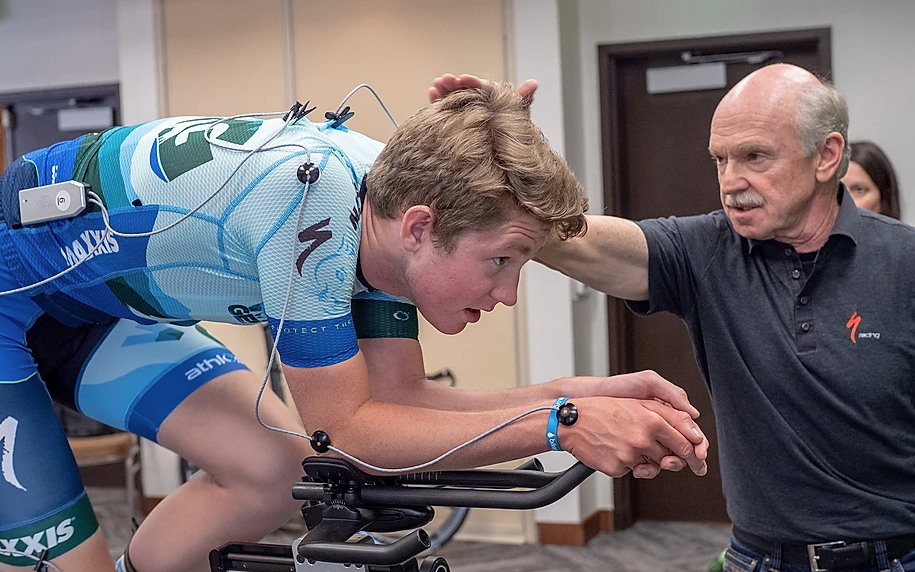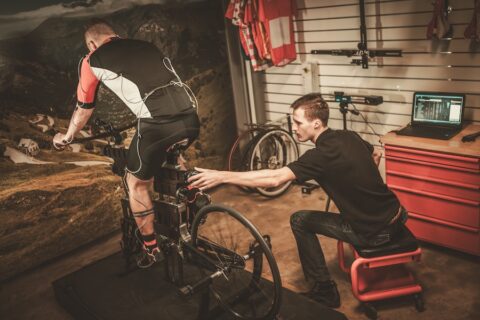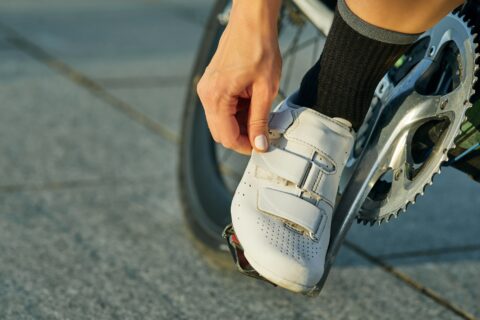It seems like it should be a simple question: How do I find a good bike fitter?
In fact, it is a question we get asked every day at Fast Talk Labs. And it is a question that I have been asked thousands of times over the past few decades in my clinical and sports medicine work. (In 2005, I was instrumental in launching Body Geometry Fit at Specialized, and it became the largest global bike fit education program of the time. We trained thousands of fitters globally.)
Since I was partially responsible for what I call the “global appetite for bike fit,” you’d think I would have a concise answer to this question. Sadly, I don’t. It might seem like a simple question, but it has a multifaceted answer.
A brief history of bike fit education
Generally speaking, I am most fond of fitters who have made bike-fitting their professional passion. Some of the most trusted fitters have no medical training beyond their fit training and self-education, while other great fitters might be physical therapists, physiologists, or coaches. The variety of individuals who make great fitters is what makes it impossible to recommend one particular group of professionals.
Before we address what makes for a good fitter and review the different fit systems, let’s address the all-important question of how one becomes a qualified bike fitter.
For some, it is as simple as on-the-job training, learning at the hands of someone with experience. Most modern fitters have partaken in educational program(s), of which there are several that I think are creditable in their own ways.
Among them is the Body Geometry Fit program I helped found. This multi-level training program leads to a certification. Body Geometry Fit still lives inside of the Retül System. Specialized purchased Retül for its motion capture technology, and then combined the BG Fit education with the technology education for a powerful partnership that continues today as an industry leader.
Other companies soon followed with their own, or copied, fit philosophies and education programs. For example, Trek created its Precision FIT program; Shimano introduced Bike Fitting Systems; and Guru began its Guru Fit Systems (partnering with Dan Empfield and his F.I.S.T. school).
BikeFit.com, led by fit pioneer Paul Swift, is also a credible school; it is not backed by a bicycle or component brand. BikeFit.com also designs and produces some fit solutions used throughout the industry.
Physical therapists who are trained in human movement can gain continuing education in bike fitting via certified programs. One of the most popular is BikePT, led by pioneering physical therapist Eric Moen in Seattle. There are many other physical therapy continuing education providers that I cannot attest to.
And then there is the International Bike Fitting Institute (IBFI), which provides multi-level training for the independent bike fitter who is not associated with a major brand. IBFI was founded and is still led by a global group of fitters. Not only does it provide education and certification, it also provides marketing for individuals.
Given this very brief overview of the fit industry, I hope it has become clear why giving advice on bike fitters is such a difficult question to answer. There are many ways to become a bike fitter, and many different credentials that you might encounter in your search.
A review of popular fit systems
I will now attempt to review the most popular fit systems/technologies/philosophies available. I must admit I am more familiar with some than others.
Note: I will not refer to individual fitters in this section, only the system or technology they use.
Retül/Specialized
With this system, fitters conduct a thorough pre-fit physical assessment so that he or she can help make the bike reflect the rider. It uses 3D-motion capture technology known as Retül Vantage to measure all the joint motions and angles, accurate to within 1 millimeter.
The regular system uses a proprietary database with which to compare a rider’s ranges of motions to established norms. This helps the fitter and the rider understand if he or she falls within normative, safe ranges.
At the end of the fit, the fitter measures the bike using a Zin tool via the Retül Vantage to document the position—again within 1 millimeter of accuracy.
A new level of Retül fit is now available in limited locations (as of May 2021). This system, known as Retül Premium Fit, differs in that the pre-fit physical assessment is done dynamically, using the 3D-motion capture to create personalized joint and position ranges of motion.
These custom ranges are specific to the rider and are no longer dependent on the database-derived ranges.
Trek Precision Fit
With this system, fitters first conduct a thorough, pre-fit assessment. They use Dartfish/Trek motion-capture technology for documenting joint and motions during the fit. Trek partners with Purely Custom to provide motorized fit bikes used during the fit process.
This system also uses GebioMized pressure mapping at contact points to help customize the fit. Trek uses the Pure Position/Trek database to compare an athlete’s data to given ranges, and it is also used in their end-of-fit documentation.
Shimano Bike Fitting
This is one of the most complex systems on the market. In fact, it’s so complicated that there is a “Wizard” mode, which allows the system to make some of the fit decisions.
Power torque cranks can provide some complex information about your foot pedal interface and its relationship to power production and efficiency. The 3D-motion capture is comparable to the systems of Retül and Trek.
In my opinion, this system requires a more competent fit technician to interpret the data and make good fit suggestions and decisions.
Guru Academy
This system uses a computer-motor-actuated fit bike to allow for changes to be made while the rider pedals. To my knowledge, there is no pre-fit physical assessment. Also, the resulting fit is driven by the rider’s input.
The system uses the Guru Bike Discovery database. The motion analysis is made with Microsoft Kinect, which in my experience is lacking when compared to the competition. Documentation is done in the X/Y planes only.
Again, this system relies heavily on rider proprioception and feedback. This is a weakness in my mind.
Fit philosophy
I believe that the bike should reflect, or look like, the rider at the time of the fit. Fit is dynamic; it can, and should, change throughout a cyclist’s lifetime. One athlete might go decades with no need for changes; another athlete might find she needs several bike fits in a relatively short period of time.
To make the bike look like the rider, it usually takes a combination of compensation and/or supportive adjustments. Comfort usually means increased performance—not the other way around.
Importantly, technology does not replace experience. The most important piece of technology in the bike fit studio is the technician! Technology should be employed to support the fitter and help with the rider experience.
How to find a fitter
Now to that all-important question of how to find a quality bike fitter. First, ask or identify the fitter’s educational background, experience, and credentials. How many different schools and philosophies has he or she studied? If you don’t already know someone who has been fit by your prospective fitter, ask for references.
If an exhaustive pre-fit assessment is not part of the process, find another fitter. Technology is important, but it is not without its limitations and should not be seen as the most critical component.
I believe that 3D-motion capture technology and pressure mapping are crucial for a good fit. A good fitter should be able to do all they need in fewer than three hours, and a follow-up should be expected.
Finally, don’t let cost drive your decision. As with many things, you get exactly what you pay for, and a good fit can cost between $200 and $750.
A final note
My experience in medical and performance fitting is deep and wide—I’ve been doing it for over 40 years. I am sure I have unintentionally offended someone in my review of these systems, and for that I am sorry.
My intention with this article is to make those seeking a good bike fit aware of the fact that bike fit is a mix of experience, science, art, and technology. So, you must find that fitter who, in your mind, balances those factors.
Bicycling is meant to be a sport (or mode of transportation) for life—pay attention to your fit and you will be rewarded.


